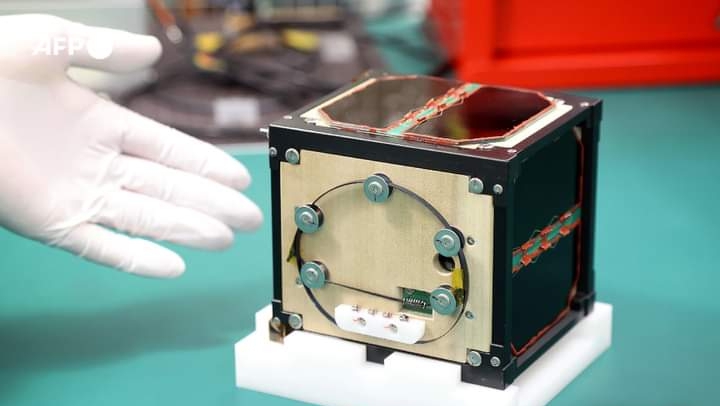By Adeyemi Adekunle
The world’s first wooden satellite, named LignoSat, has successfully blasted off into orbit aboard a SpaceX rocket. This innovative project, spearheaded by scientists from Kyoto University, marks a significant step towards sustainable satellite technology and was part of a resupply mission to the International Space Station (ISS) on Tuesday.
Crafted from advanced wooden materials, LignoSat is a box-like satellite measuring just 10 centimeters on each side. Its design aims to tackle a pressing issue in aerospace: the environmental impact of traditional metallic satellites that often leave behind harmful metal particles as they burn up upon re-entering the Earth’s atmosphere. According to the developers, these particles pose risks to both the environment and telecommunications infrastructures, making LignoSat a potentially revolutionary alternative.
The launch took place at NASA’s Kennedy Space Center in Florida, where the satellite was installed in a specially prepared container by the Japan Aerospace Exploration Agency (JAXA). In a statement posted on X, Kyoto University’s Human Spaceology Center confirmed that LignoSat “flew into space safely,” marking a successful launch that has captured the attention of the aerospace community.
“This is a thrilling moment for us,” exclaimed a spokeswoman from Sumitomo Forestry, a co-developer of the satellite. “The launch has been successful, and LignoSat will arrive at the ISS shortly. It will be released into outer space about a month later for further testing.” Researchers are eager to evaluate whether wooden materials can withstand the extreme conditions of space, including drastic temperature variations.
Astronaut Takao Doi, a special professor at Kyoto University, highlighted the potential implications of this project during a press conference earlier this year. “Satellites that are not made of metal should become mainstream,” he asserted. Doi’s enthusiasm underscores the broader vision of revolutionizing how satellites are constructed, prioritizing sustainability without compromising performance.
Once LignoSat is deployed, scientists will monitor its data closely to assess its structural integrity and ability to endure space conditions. Researchers will look for signs of strain and investigate how the wooden satellite performs under the stresses of space, including exposure to radiation and extreme temperatures.
The idea of utilizing wooden materials in satellite construction is rooted in traditional craftsmanship, advancing it into the realms of modern technology. This approach not only aims to reduce the carbon footprint of space exploration but also represents a shift towards materials that are more environmentally friendly and sustainable.
As the world grapples with climate change and environmental degradation, innovations like LignoSat could redefine future satellite missions, allowing for more eco-conscious explorations beyond our planet. If successful, this mission could set a precedent for the aerospace industry, encouraging others to explore sustainable materials that lessen the ecological impact of space travel.
The launch of LignoSat is more than a scientific experiment; it’s a bold statement about the future of aerospace technology, showcasing how traditional materials can be integrated into modern engineering. The world will be watching closely as LignoSat progresses through its mission, potentially charting a new course for the intersection of nature and technology in outer space.




